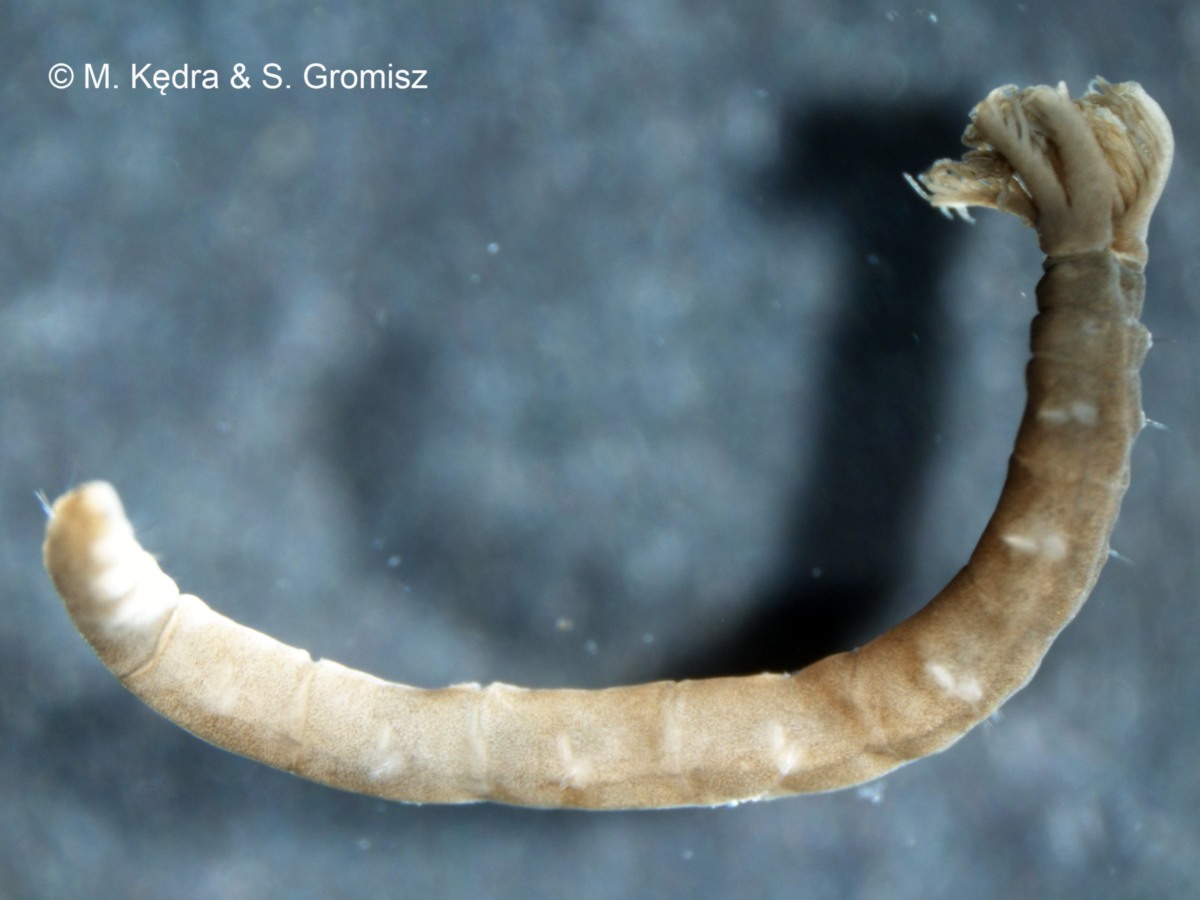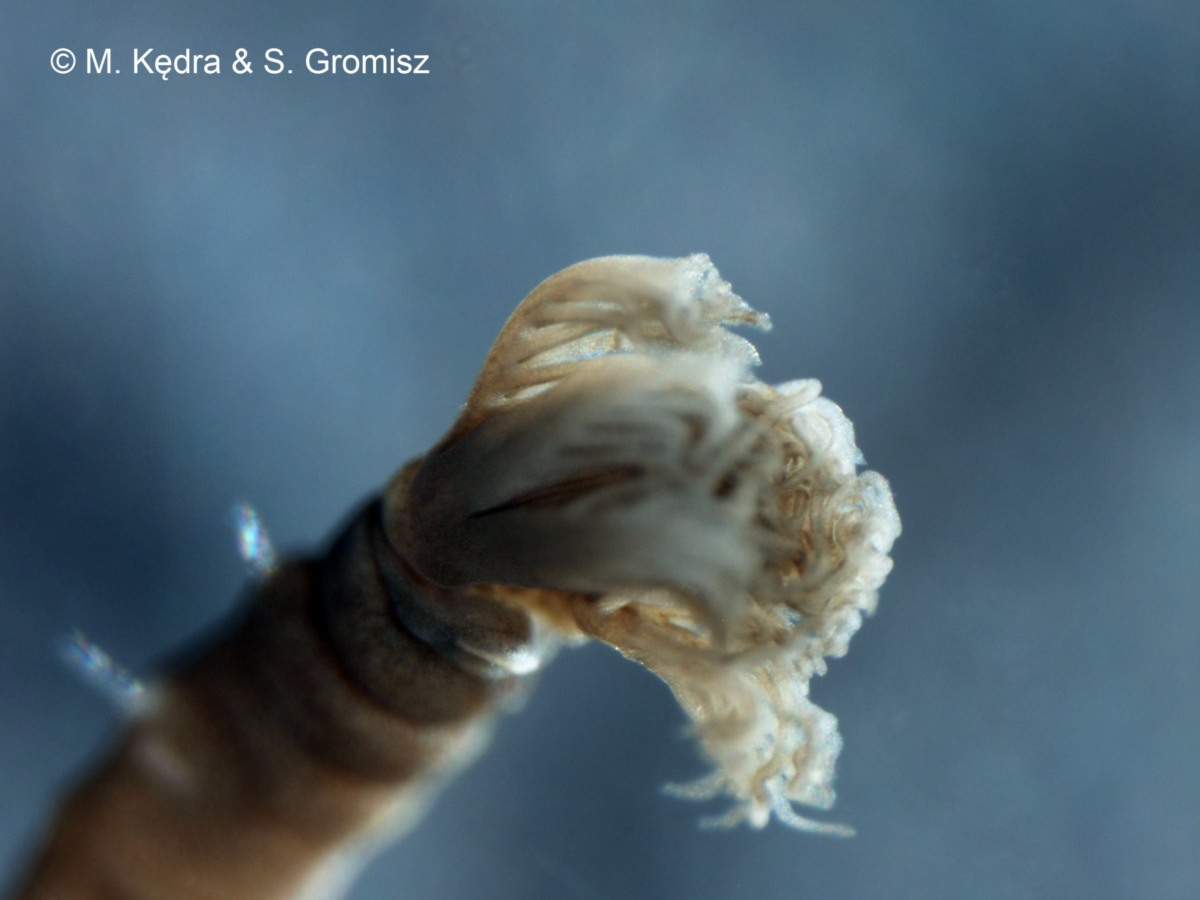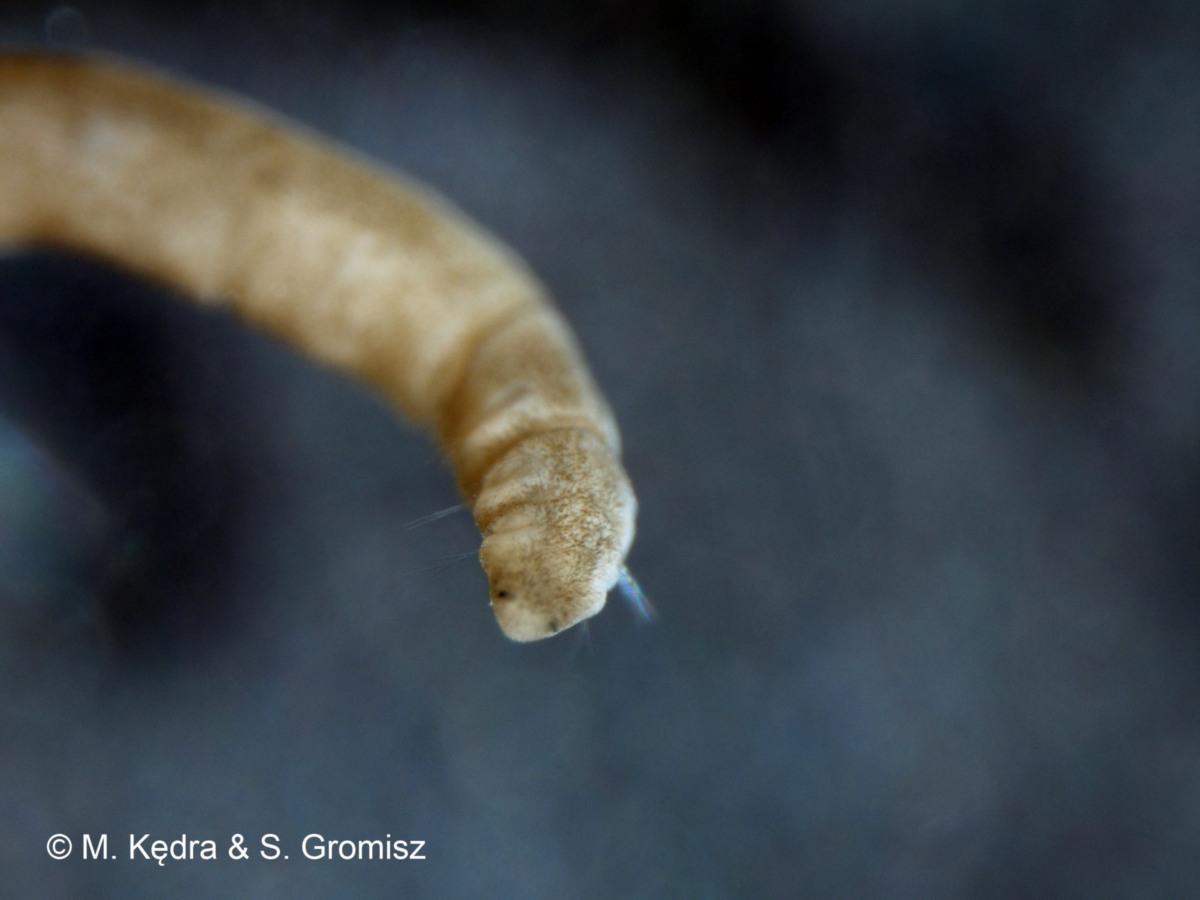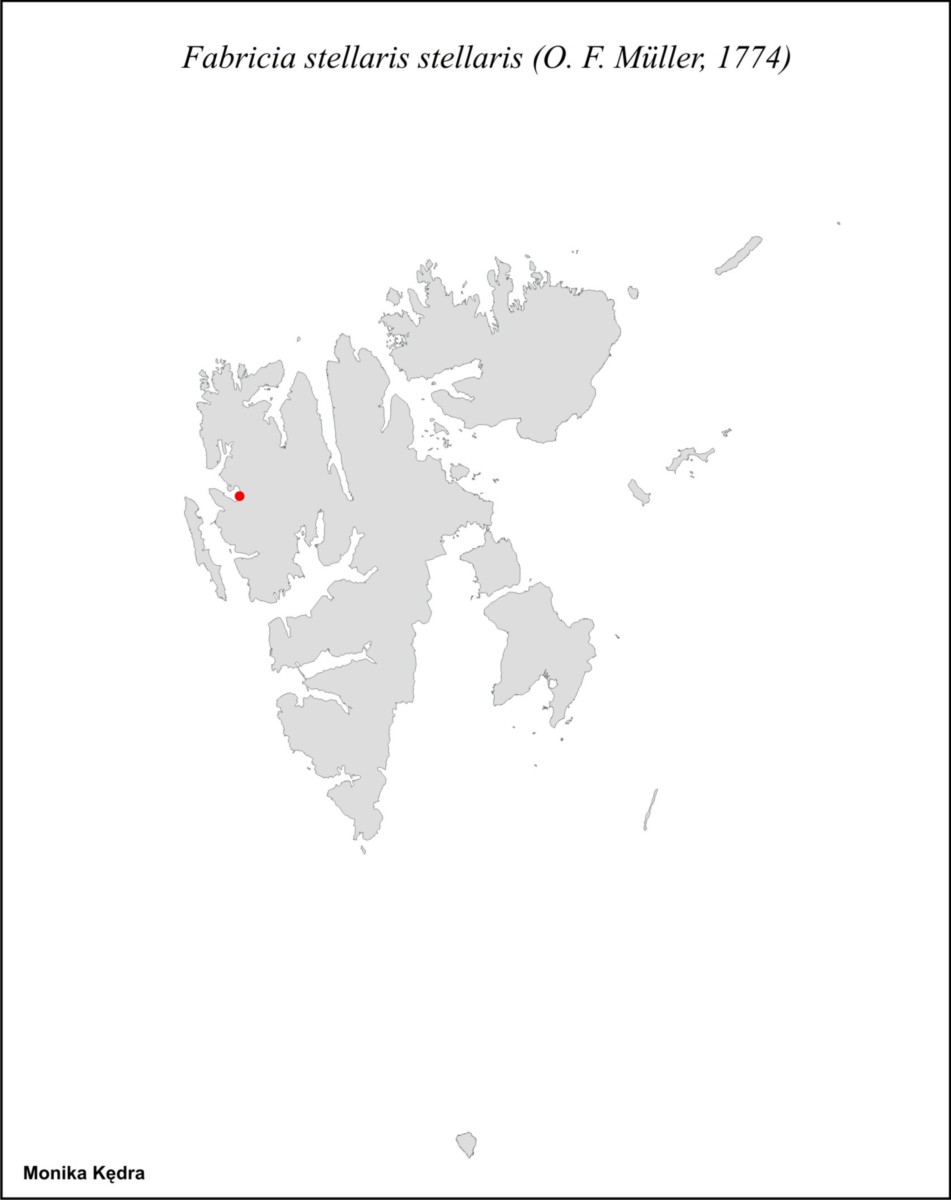Fabricia stellaris stellaris (O. F. Müller, 1774)

|

|

|

|
Tubularia stellaris Müller, 1774
Fabricia stellaris Blainville 1828
Amphicora sabella Ehrenberg, 1836
Fabricia sabella Ehrenberg, 1836
Fabriciola bochmanni Friedrich, 1940
Fabricia dubia Wesenberg-Lund, 1941
Distinguishing characteristics
Thorax with 8, abdomen with 3 chaetigers, 3 pairs of radioli.
Single pair of black eyes on peristomium and pygidium.
Species description
Body very small. Thorax with 8, abdomen with 3 chaetigers. Three pairs of radioli with side-branches. Collar only ventrally developed, building a triangular lip. Single pair of black, peristomial eyes. Thoracic notopodia with long, winged capillary chaetae, chaetigers 2 and 8 have additionally 2-3 short capillaries, segments 3-7 also with pseudospatulate chaetae. Thoracic uncini acicular. Abdominal neuropodia with 2-3 capillary chaetae. Abdominal uncini rasp-shaped plates. Pygidium rounded with a pair of black eyes. Tube - cylindrical, encrusted with mud, detritus or sand.
Size
Up to 5 mm.
Color
Transparent, yellowish to pink, with brown pigment on the anterior segments.
Habitat
In the intertidal and subtidal zone, between algae and ascidians.
Mobility
This animal apparently is able to leave quite easily his mucal tube soaked with mud to swim or crawl freely.
Feeding
Suspension feeder.
Life cycle
Brooding inside the tube with direct development.
Distribution
Arctic Ocean, Black Sea, Caribbean Sea, European waters, Gulf of Mexico, Mediterranean Sea, North East Atlantic, North Sea.

